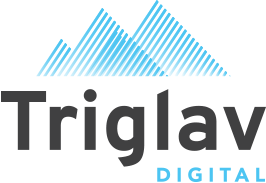Main benefits
The positive effects of AI are already well established within companies and these benefits can help them to improve their efficiency, performance and competitiveness in the market. Among other benefits, by automating some tedious and repetitive tasks, AI frees up employees’ time to focus on more strategic and creative tasks. Another example is that AI systems can analyze massive volumes of data to help companies make more informed and timely decisions. Finally, algorithms can also provide insight into the future, anticipating trends to help managers make better decisions.
The risks
However, the integration of AI in companies may have some negative effects. Indeed, the automation of certain tasks will lead to the eradication or transfer of certain jobs, whether they are low-skilled today or, like IT developers, highly skilled. In addition, the acquisition and maintenance of AI systems can be expensive, especially for small and medium-sized enterprises. It should also be noted that AI systems are subject to errors, bias and failures, which can lead to financial losses for companies and reduced consumer trust. These are just a few examples and more can be discussed, however, it demonstrates the importance for companies to take that into consideration when integrating AI into their business. How should companies proceed to mitigate these risks?
#1 – Set a clear strategy
The first step is to establish a clear strategy for the implementation of AI in the company. First and foremost, this will involve identifying the tasks that can be automated and assessing how AI can improve them.
Companies will also need to define the goals of AI in terms of measurable outcomes and assess the potential risks associated with the use of AI, such as issues of privacy, data protection and liability for damages. They should also assess the risks associated with the quality of the algorithms, including bias and error. Finally, the resources needed for the implementation of AI should be determined and a detailed plan and roadmap established.
#2 – Ensure transparency
The goal of transparency in AI is to ensure that algorithms are reliable, fair and respect human rights. Companies should ensure that they take a transparent approach to building consumer, employee and stakeholder trust in their AI technologies. To do this, companies can publish detailed information about the AI algorithms they use, including how they are designed, how they work and how decisions are made. Companies can also use independent third parties to evaluate and test their algorithms to ensure transparency and reliability.
#3 – Train employees
Employees need to be informed about the opportunities and challenges of AI and have the skills to adapt to these changes. This will mean setting up in-house training programmes to help employees understand the basics of AI and its impact on their work. Companies can also partner with universities or training schools, hold workshops and seminars on AI, or offer mentoring and coaching programmes to help employees learn new AI skills and adapt to change.
#4 – Develop ethical policies
It is important for companies to commit to an ethical AI strategy to protect the rights and interests of stakeholders, avoid abuses and negative impacts of this technology and ensure public trust.
Developing ethical policies is a fundamental step for companies. It will involve consulting with different stakeholders (employees, customers, governments and civil society organizations) to understand their concerns and expectations regarding AI. It will also involve reviewing AI standards and regulations to ensure that the strategy adopted is in line with the legislative framework, but also developing clear ethical principles to guide their AI strategy. These principles may include concepts such as transparency, accountability, privacy, fairness and non-discrimination.
Some initiatives already exist, which companies can build on. For example, the SHERPA report (a deliverable of the SHERPA project, an EU Horizon 2020 project on the ethical and human rights implications of AI and big data) contains ethical guidelines for the technological development of these systems.
#5 – Monitor impacts
It is important for companies to monitor the impact of AI to ensure that the technology does not have negative impacts on stakeholders, to identify opportunities for improvement and to build public trust. This will be done by setting up monitoring mechanisms to track the impacts of AI on employees, customers, society and the environment in real time, but also by setting up ad hoc incident management systems to identify and resolve issues quickly.
Conclusion
In conclusion, AI can be extremely useful for businesses and organizations but, as a tool, its implementation must be managed responsibly to avoid potential negative consequences. By following these few rules, companies can responsibly manage the implementation of AI in order to maximize all the benefits they could gain from it.
There is no doubt that Artificial Intelligence represents a major technological advance that has already begun to transform our lives. However, it is crucial not to lose sight of the human factor and to ensure that AI is used responsibly and ethically to improve our quality of life.
At Triglav Digital, we believe that technology should serve people, not the other way around. We must also ensure that the most vulnerable people in our society are not left behind in this technological shift and transformation.
AI can be a great tool to solve many challenges, but it should never replace the human value and creativity that makes us what we are, unique and irreplaceable.

